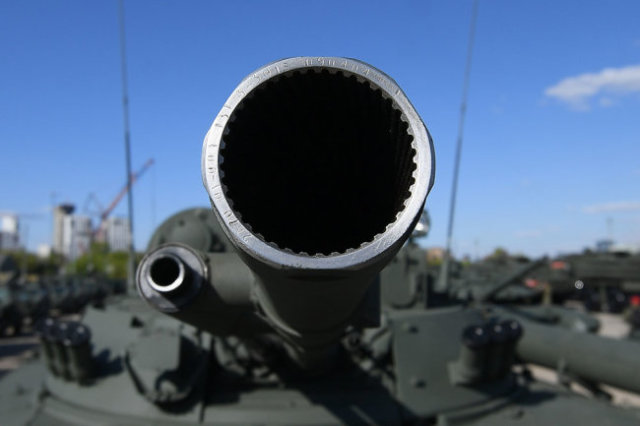In the armed forces of the United Arab Emirates, heavy infantry fighting vehicles could appear, created on the chassis of the main battle tank OF-40 using a turret from the Russian BMP-3.
New article!
An Emirati Armata - The Golden Unit HIFV ?? https://t.co/ZSPN6Z9QWs
— Oryx (@oryxspioenkop) February 1, 2022
According to the authors of the well-known Oryx blog, this development is very close in concept to the promising T-15, created on the unified Armata platform.
In the mid-noughties, more than 600 BMP-3 infantry fighting vehicles purchased in Russia were operated in the UAE.
There were also 400 French Leclerc tanks, after which four dozen OF-40s purchased in Italy in the 80s were withdrawn from the troops.
The fall of Saddam Hussein's regime in 2003 eliminated the need to maintain these tanks as a reserve, so they decided to give them a new quality.
As a result, we signed a contract with the Belgian company Sabiex International in the amount of $ 15.8 million for the manufacture of one prototype of a heavy infantry fighting vehicle.
In 2005, OF-40 was shipped to Belgium. In 2007, a prototype was made, however, a tower was not installed on it. It had a front engine arrangement, which remained the same - MB 838 CaM 500 with a capacity of 830 hp.
It is claimed that the achieved protection significantly exceeded that of -40. At the same time, the mass began to be 45,000 kg .
It took another three years before the fine-tuning was completed. Then the car was taken back to the UAE, where they finally installed a turret with a 100 mm 2A70 cannon, a 30 mm 2A72 automatic cannon and a 7.62 mm PKT machine gun. After that, full-fledged tests began, mainly in a desert area.
The crew consisted of three people - a driver located in the hull, a gunner - operator and a commander located in the combat compartment. In the landing compartment, despite the solid size of the BMP, only four infantrymen were placed, although there are places for seven fighters in the BMP-3.
Their boarding and disembarkation was carried out through the rear ramp, there was an emergency hatch on the right side of the hull.
Video cameras were installed in the front and rear, without them the driver's view deteriorated significantly.
In 2010, all tests were completed, but the redesign of the tanks did not begin. Perhaps this was due to the fact that it was possible to increase the security of the BMP-3 themselves - they received light lattice antimulant screens. Their effectiveness has been proven during the fighting in Yemen, where this technique suffered minimal losses.
The fleet of wheeled protected armored vehicles has also increased, which are now equipped with towers from "triples".
Alexey Moiseev

